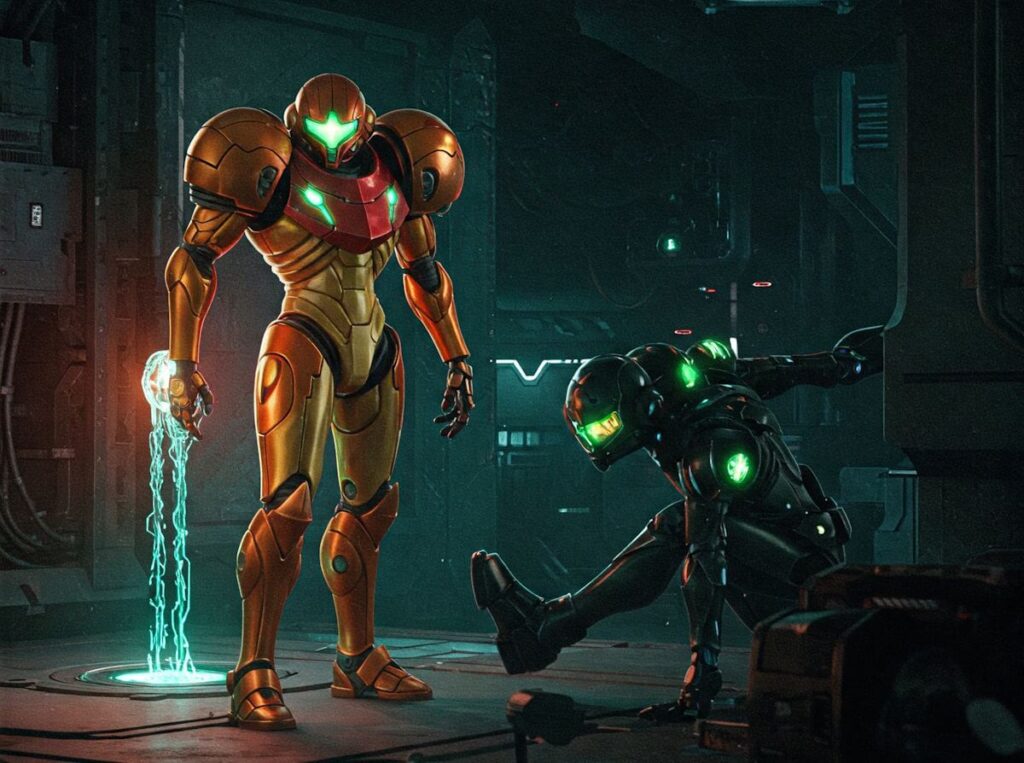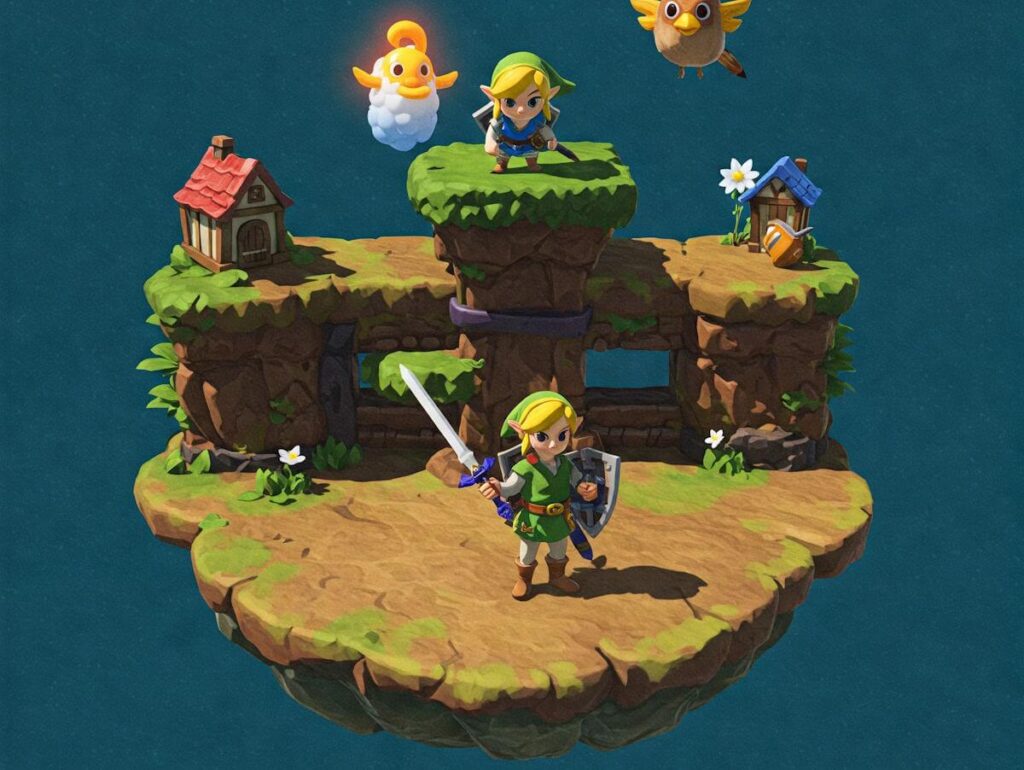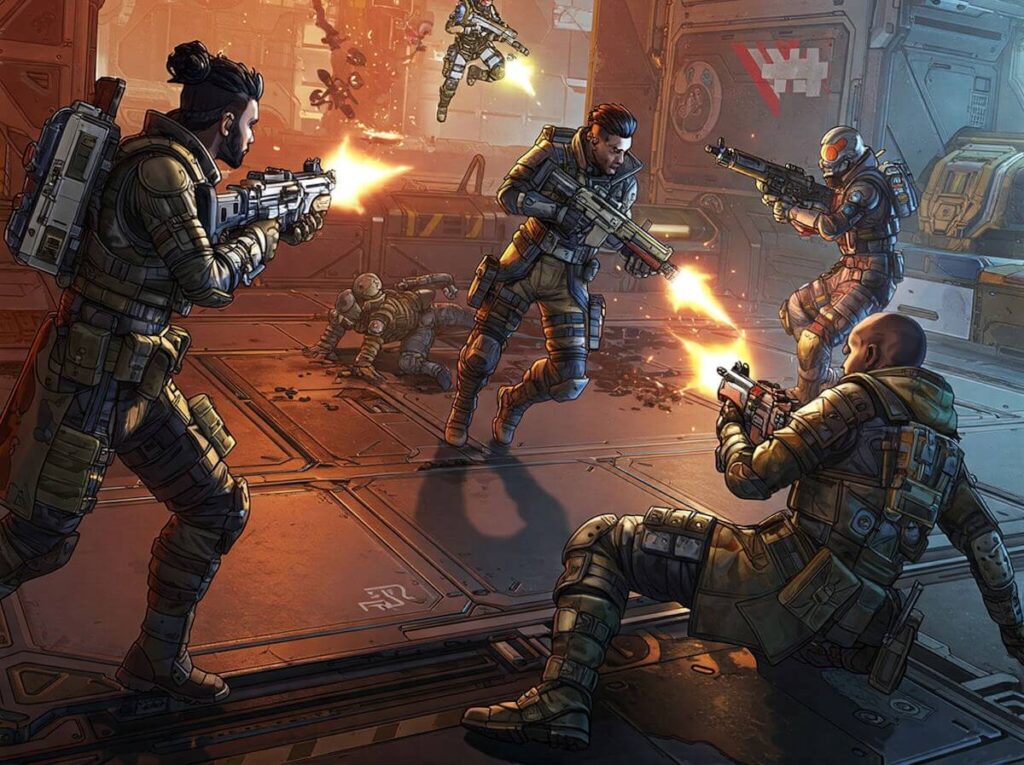Metroid Dread, the latest installment in the storied Metroid franchise, marks a significant chapter in the legacy of video games that have defined the action-adventure genre. Released on October 8, 2021, Metroid Dread revives the classic side-scrolling gameplay that fans have come to appreciate while integrating a range of modern innovations. This title not only serves as a sequel to the beloved Metroid Fusion but also represents the first new 2D Metroid game in nearly two decades, generating considerable excitement among enthusiasts and newcomers alike.
The anticipation surrounding Metroid Dread has been palpable, as it was announced during a Nintendo Direct presentation in June 2021, much to the delight of fans who had long awaited the revitalization of the series. Over the years, the franchise has garnered a loyal fanbase, with earlier titles like Super Metroid and Metroid Prime solidifying the series’ influence on the gaming landscape. This release not only seeks to honor the roots of the Metroid series but aims to redefine gameplay mechanics and storytelling in the context of contemporary gaming.
Metroid Dread introduces players to the protagonist Samus Aran, who embarks on a thrilling journey to undergo the mysteries of the planet ZDR. This game reinvigorates the franchise with a balance of nostalgia and innovation, setting the groundwork for discussing the unique gameplay innovations tailored to create an immersive experience. As players control Samus, they will encounter new enemies and environments crafted with cutting-edge technology that enhances visual fidelity and gameplay fluidity. The return of elements such as exploration and power-ups, coupled with new mechanics, ensures that Metroid Dread is not only a continuation of an iconic series but also a modern take that resonates well with today’s gaming audience.
Overview of the Metroidvania Genre
The Metroidvania genre, a term derived from two of its most iconic representatives—Metroid and Castlevania—represents a unique blend of action-platforming and exploration-focused gameplay. Central to the Metroidvania experience is a sprawling interconnected world that encourages player exploration and discovery. At the heart of this genre lies a non-linear progression system, allowing players to traverse vast environments at their own pace, unlocking new areas and secrets as they acquire specific abilities or power-ups.
One of the defining characteristics of Metroidvania games is the necessity for players to revisit previously explored regions as their skillset and capabilities increase. This mechanic fosters a sense of progression and discovery, as areas that seemed unreachable or unapproachable at first often become accessible with the right upgrades. The incorporation of environmental puzzles further enhances the exploration aspect, requiring players to engage with their surroundings to uncover hidden paths and treasures.
Power-ups play a crucial role in the Metroidvania genre, as they not only enhance the protagonist’s abilities but also facilitate progression through the game’s setting. These upgrades can range from improved combat skills to enhanced mobility, which are pivotal in overcoming obstacles and enemies. In this regard, Metroid Dread seamlessly integrates aspects of the genre with its assortment of abilities, each contributing to a heightened sense of exploration and challenge. By presenting players with a rich narrative intertwined with the vastness of its environments and gameplay elements, Metroid Dread encapsulates the essence of what defines a Metroidvania title.
As players journey through the intricacies of the game’s world, it is evident how these classic elements of the genre converge to create a fresh and engaging experience, ultimately exemplifying the innovations that Metroid Dread introduces within the framework of its predecessors.
New Gameplay Mechanics
Metroid Dread introduces a range of innovative gameplay mechanics that significantly enhance the player experience, marking a notable evolution in the series. One of the most prominent features is the E.M.M.I. (Extraplanetary Multiform Mobile Identifier) encounters. These robotic enemies create a new layer of tension within the game, as players must navigate through specific zones where E.M.M.I.s are active. Their relentless pursuit forces players to adopt stealth strategies and moments of calculated risk, effectively heightening the sense of urgency and excitement during exploration. The mechanics of evading or outsmarting these formidable foes compel players to rethink their approach, ensuring that each encounter feels fresh and thrilling.
Another innovative addition is the ability for players to slide, which not only enhances mobility but also opens up new avenues for exploration and interaction within the environment. This sliding mechanic allows players to maneuver through tight spaces and evade incoming threats more effectively. For instance, executing a slide just as an enemy attacks can provide a critical moment to counter or escape, adding a layer of skill and precision to the gameplay. This mechanic encourages players to remain engaged and responsive to their surroundings, fostering an immersive gaming experience.
Furthermore, Metroid Dread also incorporates new parkour elements, enabling players to traverse the environment in more dynamic ways. Leap and grab mechanics allow Samus to reach previously inaccessible areas, blending platforming with the exploration elements integral to the Metroid franchise. By integrating these parkour mechanics, the game promotes a deeper sense of verticality and freedom, encouraging players to experiment with different pathways. Together, these gameplay innovations not only redefine how players navigate and interact with the game world but also ensure that each session is filled with challenge and discovery.
Improved Combat Systems
The Metroid series has consistently offered players innovative gameplay, and Metroid Dread continues this legacy with significant improvements in combat systems that enhance player engagement and strategic depth. One of the standout features is the introduction of a diverse array of new weapons. These include the highly dynamic melee counterattack known as the “Parry,” which encourages players to time their offensive maneuvers carefully in response to enemy attacks. This addition not only amplifies the thrill of combat but also promotes a heightened sense of skill and timing that was less pronounced in previous titles.
Furthermore, Metroid Dread expands upon the upgrade system by providing players with various enhancements that can be tailored to their preferred playstyles. For example, players can acquire new beam upgrades that alter projectile behavior or increase damage output, allowing for fresh strategies against the game’s array of foes. This flexibility in weapon selection and upgrades ensures that players can adapt their approach based on specific enemy weaknesses or personal preferences, ultimately cultivating a more immersive and personalized gaming experience.
The implementation of advanced enemy AI also marks a significant leap in combat dynamics. Enemies in Metroid Dread are no longer simple targets; they exhibit unpredictable behaviors, requiring players to devise tactics that take advantage of specific environments and weapon capabilities. In contrast to earlier installments, this evolution in enemy design necessitates a greater variety of combat strategies, compelling players to think critically and adapt swiftly during encounters. As a result, the overall gameplay becomes increasingly engaging, as players must blend offensive and defensive techniques while considering the strengths of their foes. Through these innovations, Metroid Dread successfully revitalizes the combat experience for both seasoned players and newcomers alike, making every confrontation feel fresh and challenging.
Enhanced Mobility and Exploration
In recent years, video games have increasingly prioritized player mobility and exploration, and “Metroid Dread” stands as a prime example of this trend. The latest entry in the venerable Metroid series introduces several gameplay innovations that significantly enhance navigation and the overall exploration experience. With the integration of new traversal abilities, players are afforded a more fluid and dynamic interaction with the game’s world, allowing for a richer engagement with its intricacies.
One of the standout innovations in “Metroid Dread” is the implementation of the Flash Shift ability. This feature grants players the facility to dash across short distances with remarkable speed. The introduction of this mechanic not only facilitates faster movement but also encourages strategic thinking, as players must use Flash Shift to navigate various obstacles and circumvent enemies. This enhancement fosters a sense of agility and responsiveness, ensuring players can react promptly to the dynamic challenges presented throughout the game.
Moreover, the game’s exploration aspect has been amplified through the addition of climbing and wall-jumping mechanics. Such refinements allow players to traverse the game’s diverse environments more innovatively. They can now explore previously unreachable areas, promoting a deeper connection with the game’s narrative and thematic elements. Players will find that these enhanced mobility features encourage experimentation, enabling multiple ways to approach puzzles and navigate through multiple pathways.
The layers of complexity added to exploration not only serve gameplay mechanics but also enrich the storytelling experience. By facilitating movement and interaction with the environment, “Metroid Dread” invites players to uncover its secrets, rewarding them for their curiosity and engagement. Ultimately, the innovative traversal abilities ensure that exploring the expansive world feels not only rewarding but exhilarating and immersive.
Graphic and Audio Innovations
Metroid Dread showcases significant advancements in both visual and audio design, playing a vital role in creating an immersive gameplay experience. The game adopts a striking art style that merges hand-drawn elements with intricate 3D models, resulting in a visually captivating world. This blend of aesthetics enhances the iconic Metroid atmosphere, ensuring players are continuously engaged as they explore the various environments. The environments themselves are rich in detail, with vibrant colors and dynamic lighting that elevate the overall nuance of each area. Shadows, reflections, and particle effects are engineered to amplify the depth of the game world, providing players with a sense of presence that is both engaging and evocative.
Furthermore, graphical improvements in Metroid Dread are accompanied by a smooth frame rate, which is crucial for maintaining fluid movement and responsive gameplay. The design choices enhance not just the beauty of the game but also its functionality, making traversal and combat more enjoyable and seamless. These advancements in graphics ensure that the latest installment of the Metroid franchise not only pays homage to its predecessors but also embraces modern technology to enhance player experience.
In addition to stunning visuals, Metroid Dread excels in sound design, which is a pivotal element in establishing an immersive atmosphere. The audio includes a diverse range of sound effects that complement the gameplay, from the eerie sounds of alien creatures to the subtle ambiance of each environment. The use of directional audio cues assists in exploration, alerting players to nearby threats or hidden passages, enhancing the level of interaction with the game world.
Overall, the innovations in graphics and audio contribute to Metroid Dread’s status as a standout title within the series, highlighting the importance of these elements in crafting a compelling gaming experience. These advancements ensure that players are not just observers in the game but active participants within a beautifully rendered universe filled with atmospheric soundscapes.
Impact of AI and Enemy Design
In the realm of video game design, artificial intelligence plays a crucial role in shaping player experiences. In “Metroid Dread,” the introduction of the E.M.M.I. robots stands as a significant advancement in enemy design that fundamentally alters gameplay dynamics. The E.M.M.I. are not merely adversaries; they embody a sophisticated AI that allows them to learn from the player’s actions. Each encounter with these relentless foes demands a strategic shift, pushing players to adapt their approaches in real-time.
The behavior of the E.M.M.I. is characterized by an uncanny ability to track and hunt down players, creating a palpable sense of tension. Unlike traditional enemies that may follow predictable patterns, the E.M.M.I. present an unpredictable threat characterized by a relentless pursuit. Each time players attempt to navigate past an E.M.M.I., they must consider the robot’s current position, alertness level, and even video game-specific AI algorithms that dictate its next move. This layer of complexity makes encounters not just a test of reflexes but also of wits and strategy.
Furthermore, the AI’s ability to respond to player behavior encourages exploration and experimentation. Players may initially attempt to evade the E.M.M.I. using stealth tactics, only to realize that the AI can anticipate these moves. This realization compels players to switch to offensive strategies or find creative solutions, such as utilizing the environment to gain advantages. The design not only enhances the horror aspect of the game but also enriches player engagement by demanding continual reassessment of one’s strategy.
In essence, the E.M.M.I. robots represent a landmark moment in enemy design within the “Metroid” franchise. Their deliberate and intelligent behavior cultivates a high-stakes atmosphere, amplifying the game’s excitement and replayability. The result is a gameplay experience that keeps players on edge, fostering both anxiety and thrill, ultimately defining the engaging landscape of “Metroid Dread.”
Player Feedback and Reception
The reception of Metroid Dread has been overwhelmingly positive, particularly in relation to its gameplay innovations. Long-time fans of the series have expressed appreciation for the way the game honors its roots while simultaneously introducing new mechanics that refresh the experience. Players have particularly praised the tight controls and the enhanced exploration elements, which allow for intricate level design and encourage backtracking to discover hidden areas and power-ups. The integration of the Emmi encounters has also generated considerable discussion, with many commenting on the heightened sense of tension they create. These AI-driven adversaries introduce a new layer of challenge, compelling players to adapt their strategies and approach each encounter with caution.
New players, on the other hand, have offered varied feedback. Many appreciate the streamlined gameplay, which makes it accessible for those unfamiliar with previous installments in the franchise. The tutorials and visual cues effectively guide newcomers through the game’s mechanics, striking a balance between challenge and learnability. However, some newer fans have noted that the reliance on exploration might feel daunting, particularly in the absence of clear directives, which is a signature aspect of the Metroid series.
Critiques and discussions found across review platforms, forums, and social media reflect this diverse reception. Many reviewers have pointed out the polished graphics and atmospheric sound design as significant contributors to the overall immersion, enhancing the gameplay experience. Social media platforms have showcased a wealth of player-created content, further illustrating the community’s engagement with the game. Memes, fan art, and gameplay highlights have emerged, showing how Metroid Dread has sparked conversation and creativity among both veteran players and newcomers. Collectively, this feedback underscores the innovative strides made in gameplay while affirming Metroid Dread’s place in the series landscape.
Conclusion and Future Impact on Gaming
As we reflect on the groundbreaking gameplay innovations introduced in Metroid Dread, it becomes evident that this title not only revitalizes the legacy of the Metroid series but also significantly influences the broader gaming landscape. The integration of advanced mechanics such as the E.M.M.I. encounters introduces a new layer of tension and strategy that enhances player engagement. This innovation encourages a more meticulous approach to exploration and combat, which is a refreshing departure from traditional gameplay dynamics often seen in previous installments and similar action-adventure games.
Furthermore, the seamless transition between gameplay and narrative serves to immerse players in a way that builds emotional investment in both the character and storyline. Metroid Dread excels in merging exploration with storytelling, a feature that other developers may seek to emulate in future titles. The atmospheric graphics, coupled with an exceptional sound design, elevate the experience to unprecedented levels, setting a new standard for visual and auditory storytelling in games.
The implications of these innovations extend beyond just the Metroid franchise. They pave the way for other developers to explore similar mechanics in their games, fostering a trend towards more dynamic and interactive environments. As the industry increasingly acknowledges the importance of player agency and emotional engagement, it is likely that future games will adopt or adapt these elements to enhance their own narratives and gameplay experiences.
In conclusion, Metroid Dread not only honors its rich history but also sets a precedent for the evolution of gameplay within the action-adventure genre. Players can anticipate a future where innovation becomes the norm, driven by the successful elements showcased in this title. The impact of Metroid Dread on the gaming industry demonstrates that pushing the boundaries of game design can lead to transformative experiences, appealing to both long-time fans and newcomers alike.




